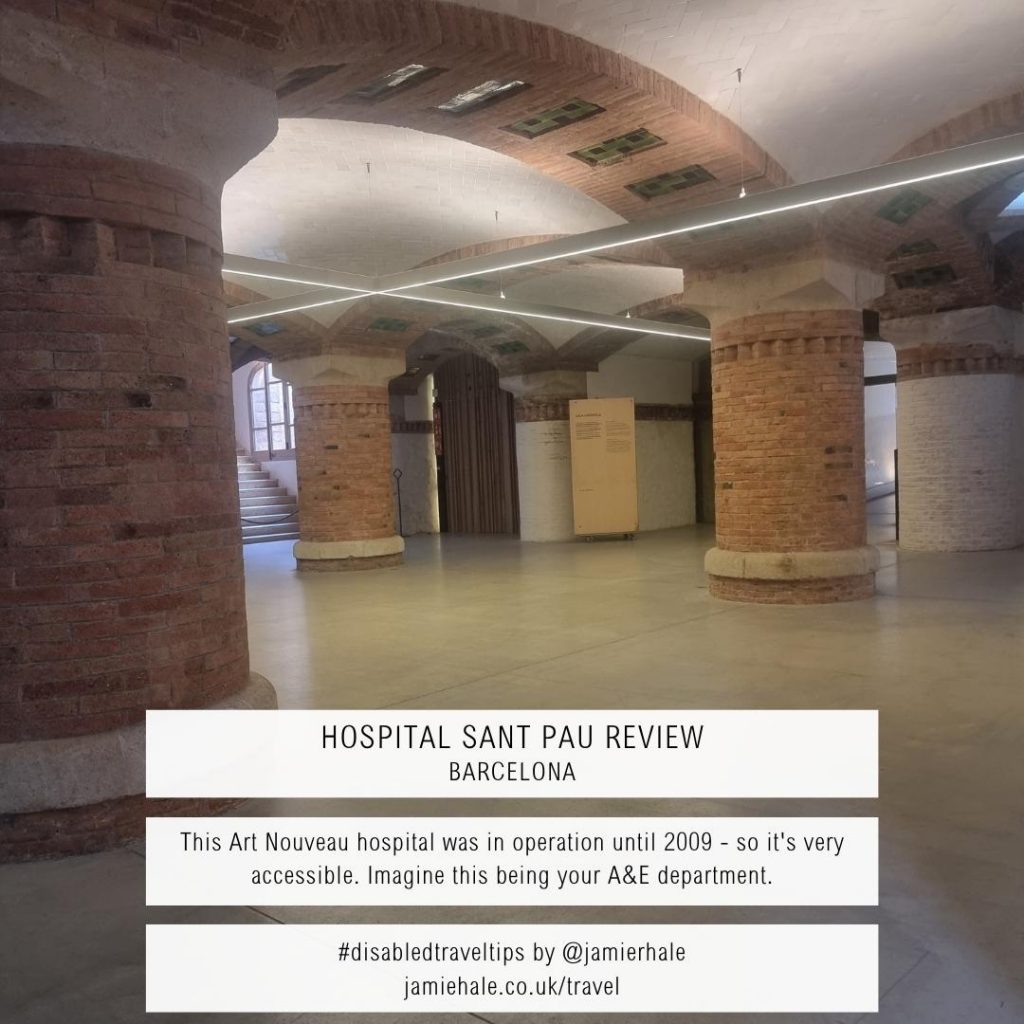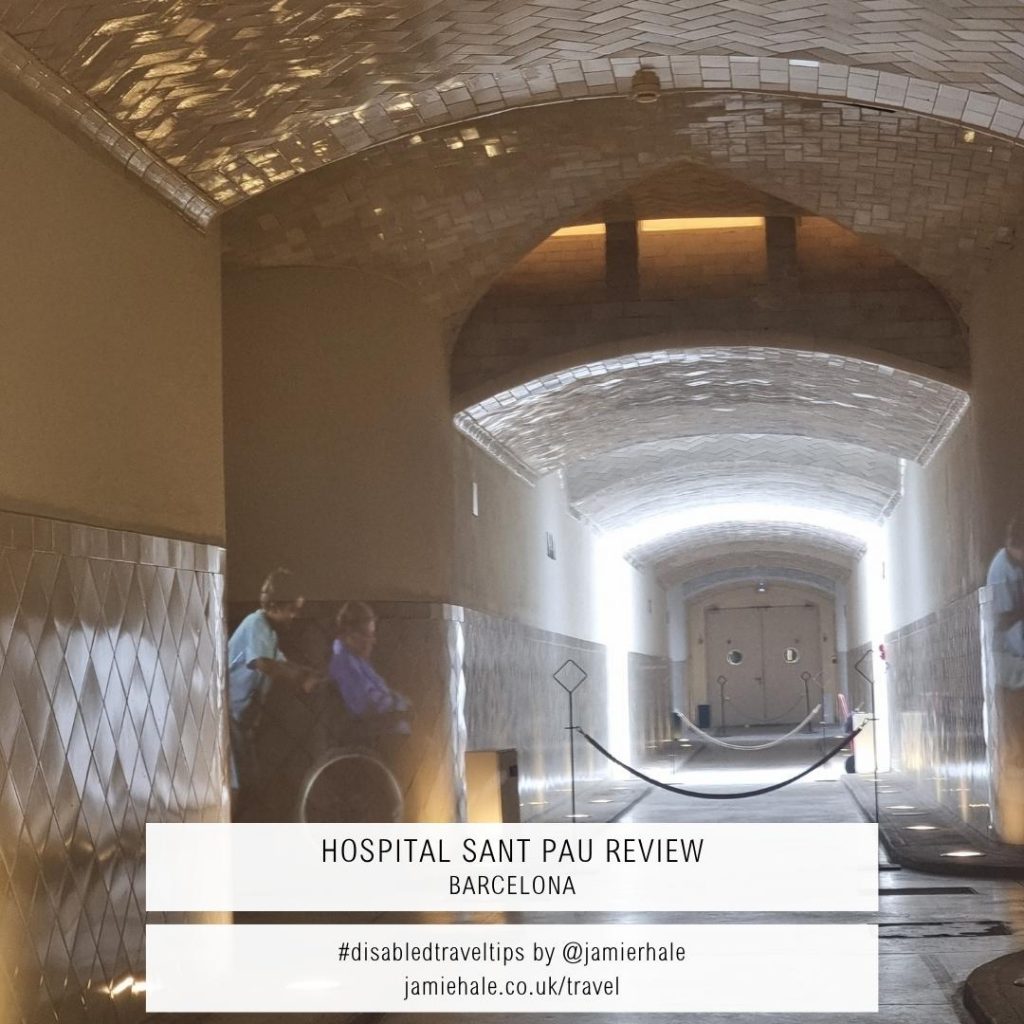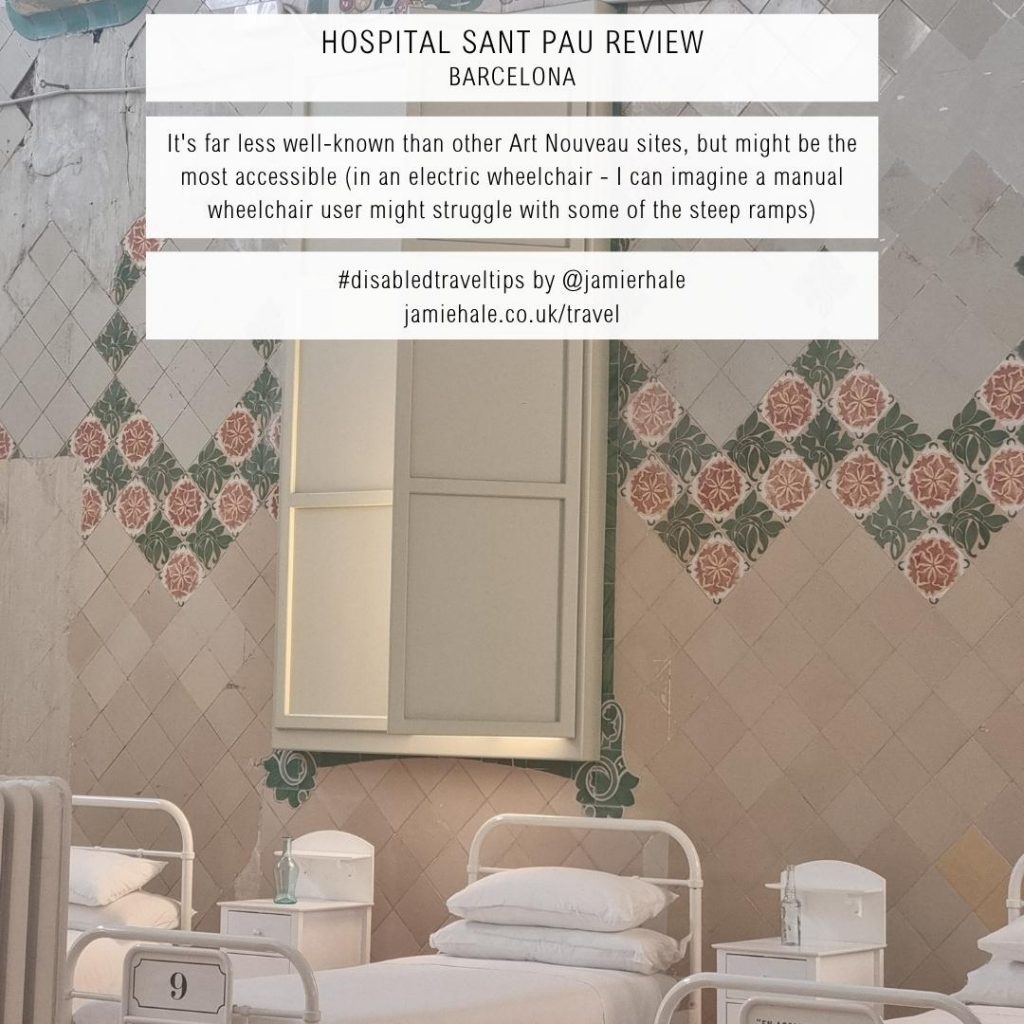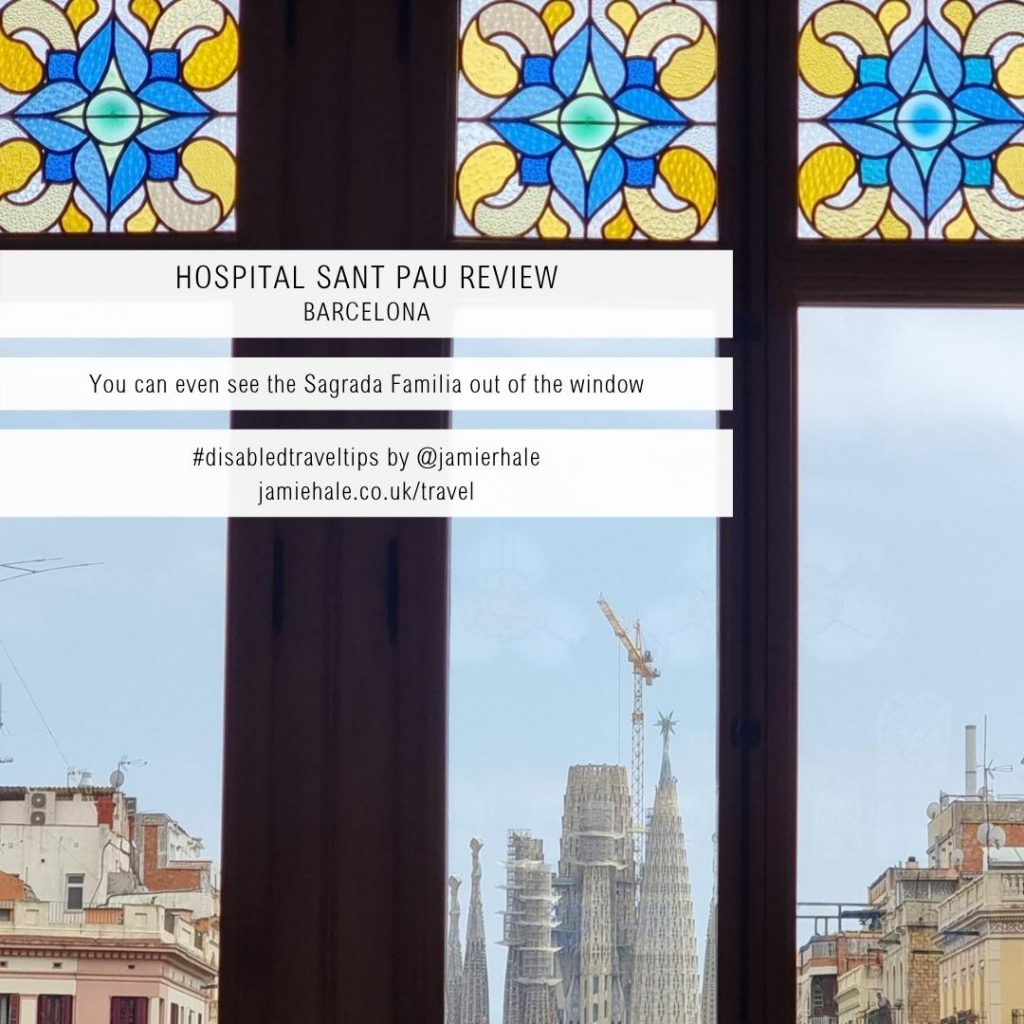This was a new find for me on this trip to Barcelona – and it’s rare that this happens. Especially when disabled access at Hospital Sant Pau was so excellent – and I fully recommend it.






Hospital Sant Pau
The Hospital de la Santa Creu (its former name) was founded in 1401, in central Barcelona. It operated for 600 years, raising money in a range of ways. At one point, it was the only place in Barcelona with a licence to put theatre on – an innovative way of raising funds.
The Hospital de la Santa Creu i Sant Pau changed its name in the very early 1900s. A banker called Pau Gil funded the new development, in the form of 26 buildings. Those buildings were in the Art Nouveau style, and made up 26 different spaces. There was a wide network of tunnels connecting them, and gardens between them. Known from then as Hospital Sant Pau, it was in active use until 2009 when it was closed. Five years were spent restoring it, until sections of it were ready for visitors – and it’s very much worth visiting.
It was incredible to believe that it was still operating in 2009. Now that it is gardens, offices, lecture theatres, and a museum, it’s impossible to imagine it teeming with patients.
A hospital as a museum
The idea of going to a hospital as a museum seemed bizarre to me. I’d spent too much time in them unwillingly, and couldn’t picture choosing to go to one. Now I’ve visited, the Hospital Sant Pau (as it’s casually known) is my favourite hidden gem of Barcelona. While the Sagrada Familia is rightly incredibly famous for its architecture, the Hospital Sant Pau is also an Art Nouveau spectacle (from which you can see the Sagrada Familia).
The renovation left an excellent design and arrangement of the museum, with a calm atmosphere and gorgeous renovation work. Entrance is (as with all museums) paid, but there is a significant discount for disabled people, especially those over 75% disabled.
Architecture and design
Architecturally it’s incredible. Their version of A&E would have taken place amidst a wide range of gorgeous columns and arches. The wards traditionally each had an altar. They even clearly knew patients would spend a lot of the time lying on their backs looking up, because they decorated the ceilings in gorgeously rich tiling. It was airy, spacious, and green. This felt as if it reflected an understanding that medicine needs to be holistic, with subjectivity and beauty and nature .
I felt very strange being a tourist in a place that I connected so closely to sickness and death. The Hospital Sant Pau had a profound solemnity, something that required a certain contemplative silence. It felt very similar to being in a church. The building emanated a request for you to approach it with a peaceful air.
Disabled access at Hospital Sant Pau
I can’t quite believe that I didn’t know about this place before. The access was very good through a range of smooth ramps (probably built to transport beds). There were some areas that required lifts – but they had them. I didn’t work out my route to the exhibition space or the tunnels – but that was because of limited time, rather than limited access.
The only major issue I found was the large baby change table filling the adapted toilet. For a museum that got so much right, this was disappointing. However, there was still more space in that toilet than one finds on a train!
This is somewhere I’d both definitely recommend, and definitely return to.